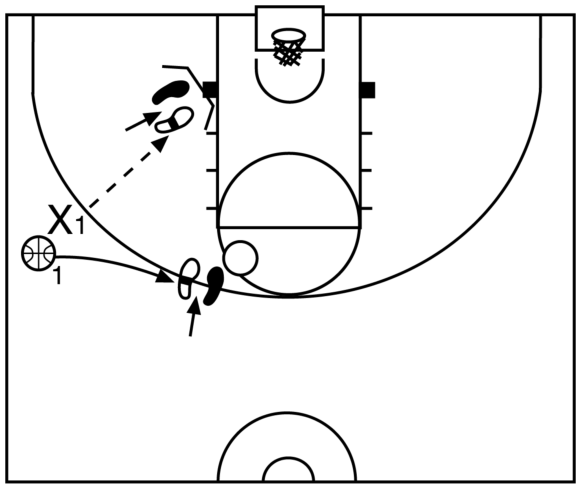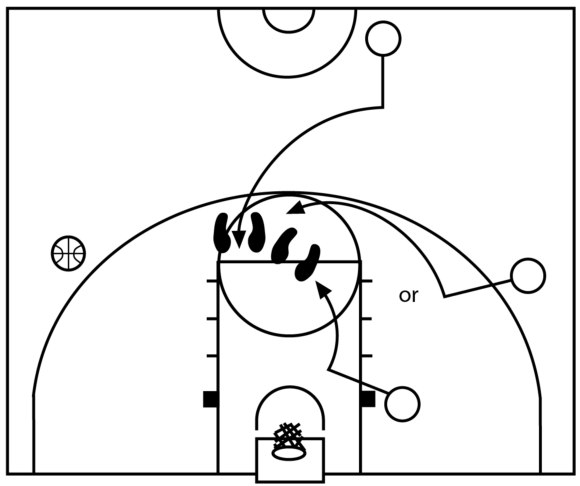The technique used for high-post play or short-corner play (from the low-post position) combines back-to-the-basket and facing-the-basket techniques. Often, the defender in the high-post area defends with a hand in denial position on the ball side. Offensive high-post players may get open by initiating contact with the lower body and providing a target hand away from the defender (figure 6.13). This contact method of getting open has the disadvantage of establishing one foot as the pivot foot when the high-post player catches and faces the basket using RPA. Using either-pivot-foot (EPF) footwork, the post player may give up his or her position in order to catch the ball with both feet in the air facing the basket.

Figure 6.13 Getting open in the high-post or the short-corner (low-post) area.
When cutting into the post area as a trailer on the fast break or cutting from below, players should cut into the high post and catch the ball with a quick stop facing the basket (ball in the air, feet in the air), as shown in figure 6.14.

Figure 6.14 High-post cuts from low post, wing, or trailer position.
However, when high-post players catch the ball, they need to catch and face using RPA with a determined pivot foot (established). If the post player catches the ball facing the basket with the feet in the air, attacking options to either side are readily available. If permanent-pivot-foot (PPF) footwork is used, the high-post player can attack the preferred side with a direct drive or the nonpreferred side with the recommended crossover drive plus shooting options. When EPF footwork is chosen, players should use the following facing options (Zak attack) in the congested area of the high post (15 to 20 feet, or 4.6 to 6.1 meters, from the basket). These facing-the-basket attack moves are designed to penetrate to the basket using only one or two dribbles that result in a layin; a pass to a teammate; or a jump shot, floater, or dead-ball move closer to the basket.